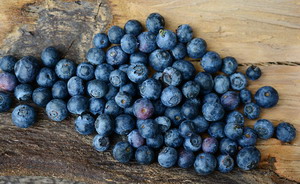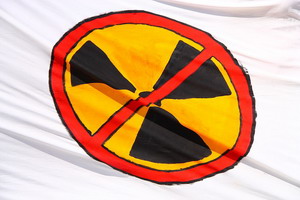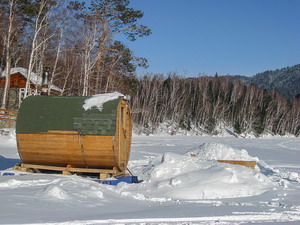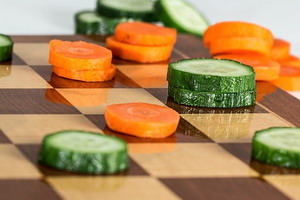 Life is full of so much health-destroying stress, so how can stress be helpful? Everything is telling us we need to reduce stress in order to get healthy. Well, guess what, there is such a thing as helpful stress. Not all stress is bad for us. Life is a balancing act on all levels. Very rarely can we say anything is all bad or all good for the body. Take water for example. Some water every day is a good thing, but too much is called drowning — not a good thing. Maybe that example seems silly, so let’s use a less obvious example — weight training for muscle building.
Life is full of so much health-destroying stress, so how can stress be helpful? Everything is telling us we need to reduce stress in order to get healthy. Well, guess what, there is such a thing as helpful stress. Not all stress is bad for us. Life is a balancing act on all levels. Very rarely can we say anything is all bad or all good for the body. Take water for example. Some water every day is a good thing, but too much is called drowning — not a good thing. Maybe that example seems silly, so let’s use a less obvious example — weight training for muscle building.
 You can go into a gym and set each machine to its lowest setting and get a nice aerobic stretching workout. Your muscles will feel good because you are getting blood flow to them and the full ranges of motion you are putting them through will loosen them up wonderfully. This is all great, but it will not build any muscle. You will not get any stronger and you will not increase your muscle mass doing these types of exercises. Why not? Well, your body is incredibly stingy with its resources. It is always trying to conserve energy, and building muscle takes a lot of energy. It is just like building a house. You need just the right materials in the right amounts. You need general workers and skilled craftsmen to supply the labor. You need site preparation and cleanup and on and on. Building any new tissue in the body uses up a lot of energy and resources.
You can go into a gym and set each machine to its lowest setting and get a nice aerobic stretching workout. Your muscles will feel good because you are getting blood flow to them and the full ranges of motion you are putting them through will loosen them up wonderfully. This is all great, but it will not build any muscle. You will not get any stronger and you will not increase your muscle mass doing these types of exercises. Why not? Well, your body is incredibly stingy with its resources. It is always trying to conserve energy, and building muscle takes a lot of energy. It is just like building a house. You need just the right materials in the right amounts. You need general workers and skilled craftsmen to supply the labor. You need site preparation and cleanup and on and on. Building any new tissue in the body uses up a lot of energy and resources.
 When you engage in weight lifting with the intent of building muscle, you have to convince the body that you do not have enough muscle now. How does the body know when you need more? Rudely that message comes about when muscle cells get torn apart. They release chemical messengers from inside the cells that stimulate the body to build more muscle. Basically, you showed the body that you did not have enough muscle by overloading the muscles you have and causing injury. The body responds by creating more muscle strength so that it can handle that load in the future. The trick with this process is to overload the muscles only a little bit so only a tiny amount of the muscle cells get torn. If there is too much tear then a whole different system comes into play, the one for emergency injury response. Instead of building new muscle tissue, the emergency system jumps in and lays down scar tissue to glue the damaged area back together. So a little bit of injury stimulates a growth response while a lot of injury stimulates an immediate injury repair which generally leaves permanent impairment.
When you engage in weight lifting with the intent of building muscle, you have to convince the body that you do not have enough muscle now. How does the body know when you need more? Rudely that message comes about when muscle cells get torn apart. They release chemical messengers from inside the cells that stimulate the body to build more muscle. Basically, you showed the body that you did not have enough muscle by overloading the muscles you have and causing injury. The body responds by creating more muscle strength so that it can handle that load in the future. The trick with this process is to overload the muscles only a little bit so only a tiny amount of the muscle cells get torn. If there is too much tear then a whole different system comes into play, the one for emergency injury response. Instead of building new muscle tissue, the emergency system jumps in and lays down scar tissue to glue the damaged area back together. So a little bit of injury stimulates a growth response while a lot of injury stimulates an immediate injury repair which generally leaves permanent impairment.
 This positive adaptation to small amounts of stress is called hormesis. The body is saying “I can handle this with just a bit of adaptation.” When the level of stress is the right amount to stimulate a positive adaptation, the stress is termed hormetic stress. With muscles, it is easy to see how just a tiny 1% damage to the muscle would still leave the organism able to function well so an emergency stress response is not needed. But if you tore a muscle 30%, 50%, even 70%, you would not want to use that muscle at all. You would want emergency glue to hold everything together so the muscle would not tear the rest of the way through the next time you tried to use it.
This positive adaptation to small amounts of stress is called hormesis. The body is saying “I can handle this with just a bit of adaptation.” When the level of stress is the right amount to stimulate a positive adaptation, the stress is termed hormetic stress. With muscles, it is easy to see how just a tiny 1% damage to the muscle would still leave the organism able to function well so an emergency stress response is not needed. But if you tore a muscle 30%, 50%, even 70%, you would not want to use that muscle at all. You would want emergency glue to hold everything together so the muscle would not tear the rest of the way through the next time you tried to use it.
 The concept of hormetic stress is how our body adapts to its environment. It is how we learn and get stronger. It is the opposite side of the part of the body that tries to conserve energy to ensure there is enough energy for basic survival when times are lean. This principle is not limited to just muscles. In fact, this principle is in play throughout the body. One of the first descriptions of this principle is in the old saying attributed to the German Renaissance doctor Paracelsus “the dose makes the poison.” Thousands of years ago kings of various lands would regularly consume small amounts of various poisonous plants and animals to fortify their systems against being poisoned by some rival to the throne. The small doses of poison increased their body’s ability to detoxify the poison. The body does this with all sorts of poisons. It is reflected in the famous philosophical quote from Nietzsche, “that which does not kill us makes us strong.” Hormetic stress is not only chemical but psychological as well. It is what I termed helpful stress.
The concept of hormetic stress is how our body adapts to its environment. It is how we learn and get stronger. It is the opposite side of the part of the body that tries to conserve energy to ensure there is enough energy for basic survival when times are lean. This principle is not limited to just muscles. In fact, this principle is in play throughout the body. One of the first descriptions of this principle is in the old saying attributed to the German Renaissance doctor Paracelsus “the dose makes the poison.” Thousands of years ago kings of various lands would regularly consume small amounts of various poisonous plants and animals to fortify their systems against being poisoned by some rival to the throne. The small doses of poison increased their body’s ability to detoxify the poison. The body does this with all sorts of poisons. It is reflected in the famous philosophical quote from Nietzsche, “that which does not kill us makes us strong.” Hormetic stress is not only chemical but psychological as well. It is what I termed helpful stress.
 Let’s look at some examples. A common one is carbon monoxide. We all know that a lot of carbon monoxide will kill you. It is why you don’t leave your car running with the garage door down. But I’ll bet you did not know that carbon monoxide is a neurotransmitter. It is toxic to be deficient in carbon monoxide. It is also toxic to have too much. This is the Goldilocks principle I have written about many times before. Everything in the body needs to be at a very specific level to function. Too much or too little is a bad thing. Oxygen, water, heat, cold, all sorts of things have to be in just the right amounts or it damages our health.
Let’s look at some examples. A common one is carbon monoxide. We all know that a lot of carbon monoxide will kill you. It is why you don’t leave your car running with the garage door down. But I’ll bet you did not know that carbon monoxide is a neurotransmitter. It is toxic to be deficient in carbon monoxide. It is also toxic to have too much. This is the Goldilocks principle I have written about many times before. Everything in the body needs to be at a very specific level to function. Too much or too little is a bad thing. Oxygen, water, heat, cold, all sorts of things have to be in just the right amounts or it damages our health.
 Let’s consider another type of hormetic stressor. This one is more like weight lifting. You don’t have to lift weights to be healthy, just to be strong. Well, how about various things that we eat that act in this same way? We have all heard of how important it is to eat foods full of antioxidants. After all, excess oxidation in our body creates tissue damage and inflammation. But did you know that a lot of the foods we think of as anti-oxidant foods are in fact oxidants? It’s the exact opposite of what we thought they were. They are hormetic stressors to our anti-oxidant system. They are a little bit of oxidation that triggers our body to produce its own anti-oxidant chemicals in abundance. Their net effect is to reduce oxidation and improve our health, but they are actually tiny poisons.
Let’s consider another type of hormetic stressor. This one is more like weight lifting. You don’t have to lift weights to be healthy, just to be strong. Well, how about various things that we eat that act in this same way? We have all heard of how important it is to eat foods full of antioxidants. After all, excess oxidation in our body creates tissue damage and inflammation. But did you know that a lot of the foods we think of as anti-oxidant foods are in fact oxidants? It’s the exact opposite of what we thought they were. They are hormetic stressors to our anti-oxidant system. They are a little bit of oxidation that triggers our body to produce its own anti-oxidant chemicals in abundance. Their net effect is to reduce oxidation and improve our health, but they are actually tiny poisons.
 Sometimes this hormetic dose thing gets into really crazy areas. One such area is radiation. The traditional model of radiation is called a linear no-threshold model (LNT). It assumes that a dose of zero is best, and anything more than that is bad. But this does not fit the observed reality of how humans interact with radiation in the real world. Obviously, a lot of radiation will kill you, as Hiroshima and Nagasaki showed us. But interestingly those people further away that got only a low dose of radiation from the bomb blasts, showed lower levels of cancer deaths than the average for the Japanese population. Similarly, 10,000 people exposed for a long time to radiation-contaminated building materials in Taiwan showed only 7 cancer deaths due to radiation instead of the 232 deaths that should have happened due to natural background radiation. Somehow the radiation in the building materials actually made the people more resistant to death by cancer from background radiation. This kind of hormetic response to radiation is causing quite the controversy amongst nuclear regulatory agencies around the world.
Sometimes this hormetic dose thing gets into really crazy areas. One such area is radiation. The traditional model of radiation is called a linear no-threshold model (LNT). It assumes that a dose of zero is best, and anything more than that is bad. But this does not fit the observed reality of how humans interact with radiation in the real world. Obviously, a lot of radiation will kill you, as Hiroshima and Nagasaki showed us. But interestingly those people further away that got only a low dose of radiation from the bomb blasts, showed lower levels of cancer deaths than the average for the Japanese population. Similarly, 10,000 people exposed for a long time to radiation-contaminated building materials in Taiwan showed only 7 cancer deaths due to radiation instead of the 232 deaths that should have happened due to natural background radiation. Somehow the radiation in the building materials actually made the people more resistant to death by cancer from background radiation. This kind of hormetic response to radiation is causing quite the controversy amongst nuclear regulatory agencies around the world.
 Let’s get down and dirty with this — how can we use this to our advantage? I have already discussed the advantages of weight lifting exercise and certain foods acting on this principle. What other hormetic helpful stresses can we use to our benefit? Both heat and cold act as hormetic stressors. The hot spa followed by the ice plunge acts as a hormetic for the body. This is very popular in Finland — get all toasty in a sauna then run out and jump through a hole in the ice on the lake. It does make you live longer. Hypergravity is noted for increasing health; we get a bit of that on our vibration plate and rebounder mini-trampoline. Probably the most accessible hormetic stress available to us is calorie restriction — meaning fasting. When we super reduce the amount of food we consume all sorts of chemical pathways fire up to help us survive. Growth hormones skyrocket, stem cell production goes way up, and autophagy is turned on to clear out viruses, bacteria, and old malfunctioning cells. Everything you could want to make yourself younger and healthier is turned on when you fast.
Let’s get down and dirty with this — how can we use this to our advantage? I have already discussed the advantages of weight lifting exercise and certain foods acting on this principle. What other hormetic helpful stresses can we use to our benefit? Both heat and cold act as hormetic stressors. The hot spa followed by the ice plunge acts as a hormetic for the body. This is very popular in Finland — get all toasty in a sauna then run out and jump through a hole in the ice on the lake. It does make you live longer. Hypergravity is noted for increasing health; we get a bit of that on our vibration plate and rebounder mini-trampoline. Probably the most accessible hormetic stress available to us is calorie restriction — meaning fasting. When we super reduce the amount of food we consume all sorts of chemical pathways fire up to help us survive. Growth hormones skyrocket, stem cell production goes way up, and autophagy is turned on to clear out viruses, bacteria, and old malfunctioning cells. Everything you could want to make yourself younger and healthier is turned on when you fast.
 Fasting as a hormetic is just like any other hormetic — it is all in the dose. For some people just staying away from food for 12-14 hours a day is a stretch. For others, three to five days doing a low carb and low protein diet followed by a good quality protein afterward are ideal. Still, others are able to heal diabetes by doing a three-week fast under a doctor’s supervision. Finding the correct dose is the challenge with hormetic helpful stressors. The big message is things are not as simple as good versus bad in the body. The dose makes the poison.
Fasting as a hormetic is just like any other hormetic — it is all in the dose. For some people just staying away from food for 12-14 hours a day is a stretch. For others, three to five days doing a low carb and low protein diet followed by a good quality protein afterward are ideal. Still, others are able to heal diabetes by doing a three-week fast under a doctor’s supervision. Finding the correct dose is the challenge with hormetic helpful stressors. The big message is things are not as simple as good versus bad in the body. The dose makes the poison.
Take care,
David
